Saturday Lectures - IPKO Classroom - 18.10.2025
Barabar Centre (Grand - 4th Floor)
Lecture and Book Promotion: "Stories Through Light: Photography as Narrative" by Griseld Hoxha / 18.10.2025 / 10:00 - 11:45 / Barabar Centre (Grand 4th Floor)
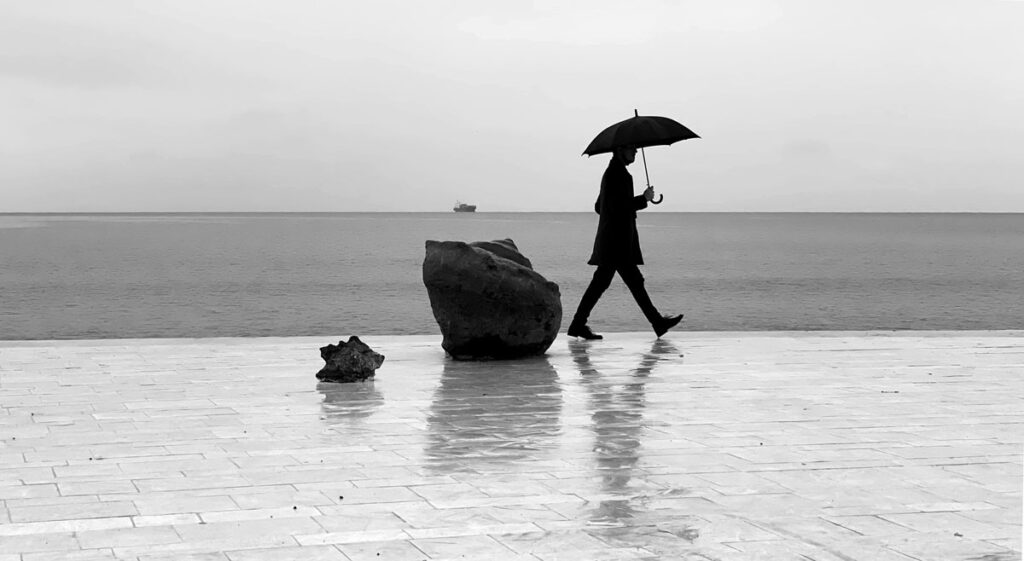
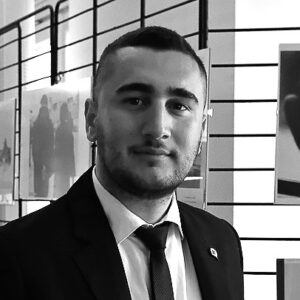
Photo: © Griseld Hoxha
Lecture and Book Promotion: Stories Through Light: Photography as Narrative by Griseld Hoxha
Stories Through Light: Photography as Narrative
Griseld Hoxha is a photographer whose work transforms fleeting moments into lasting narratives. For him, photography is not merely the act of freezing time, it is a dialogue with memory, emotion, and the living spirit of the city. Through his lens, forgotten streets, faces marked by experience, and gestures of quiet humanity take on new life, reminding us that every corner of the urban landscape holds a story worth telling.
In his book Photography that Touches the Inner Leyers of the City, Hoxha ventures beyond the visible surface, capturing the rhythm of life and the spirit of people who shape the soul of the city. His images invite viewers to pause, to look deeper, and to recognize that light itself carries voices, sometimes loud, sometimes whispered, through which the city speaks.
For Griseld, photography is more than art; it is a bridge across time and generations, a way to connect personal stories to collective history. His presentation and a book promotion at FOTOIST reflects this vision, offering audiences not only images but also encounters with memory, presence, and the enduring power of light.
Lecture: "A Brief Guide to Investigating War Crimes" - Ron Haviv / 18.10.2025 / 11:00 - 11:45 / Barabar Centre (Grand - 4th Floor)

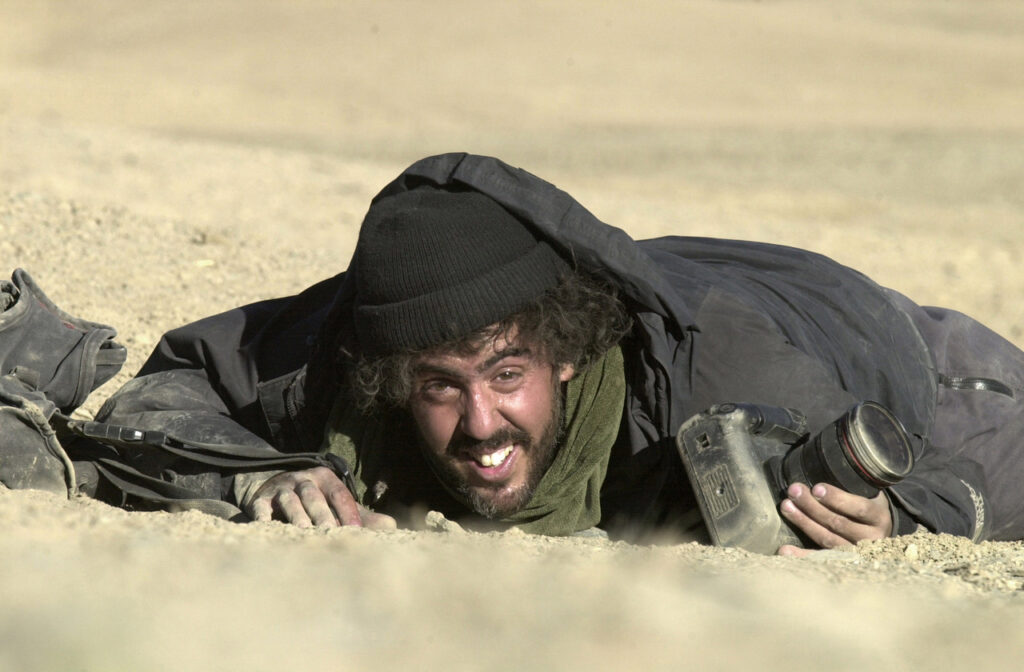
Photo: © Ron Haviv – Remains of Kolë Dushmani who was beheaded and burned during Kosova War 1999
A world class lecture about photojournalism: Ron Haviv at FOTOIST – International Photography Festival
FOTOIST – International Photography Festival proudly presents a landmark lecture by Ron Haviv, one of the most influential photojournalists of our time. A co-founder of the acclaimed VII Foundation, Haviv has spent over three decades documenting the frontlines of history, from the wars in Bosnia and Kosovo to the conflicts in Iraq, Syria, and Ukraine. His photographs have not only shaped global awareness but have also served as evidence in international courts, bearing witness to atrocities and helping preserve historical memory. This extraordinary event brings together Haviv’s powerful visual narratives alongside work from other leading photographers of the VII Foundation. Drawing from the Global Investigative Journalism Network’s Guide to Investigating War Crimes, the lecture highlights the vital role of photography in exposing the truth behind war crimes and the indispensable collaboration between photojournalism and investigative reporting. Ron Haviv will reflect on the ethical responsibility of the photographer as a witness, sharing insights into how each frame captures more than a moment, it tells a story that demands to be seen, remembered, and understood. His talk is both a masterclass in visual storytelling and a call to conscience. The lecture is open to students, photography and journalism professionals, human rights advocates, and all those concerned with the documentation of war and justice. Join us for an unforgettable encounter with the images that have shaped how the world sees conflict, and the man behind the lens.
RON HAVIV
Ron Haviv is an Emmy-nominated filmmaker and an award-winning photojournalist. He co-founded VII Photo Agency and The VII Foundation, where he currently serves as a director. He is dedicated to documenting conflict and raising human rights issues around the globe. Haviv’s first photography book, Blood and Honey: A Balkan War Journal, was called “One of the best non-fiction books of the year,” by The Los Angeles Times and “A chilling but vastly important record of a people’s suffering” by Newsweek. His other monographs are Afghanistan: The Road to Kabul, Haiti: 12 January 2010, The Lost Rolls and Shadow of Memory. Haviv has produced an unflinching record of the injustices of war covering over twenty-five conflicts and his photography has had singular impact. His work in the Balkans, which spanned over a decade of conflict, was used as evidence to indict and convict war criminals at the international tribunal in The Hague. President George H.W Bush cited Haviv’s chilling photographs documenting paramilitary violence in Panama as one of the reasons for the 1989 American intervention. His work is in the collections of The Getty, Eastman House and Museum of Fine Arts, Houston amongst others and has been seen in numerous other museums and galleries, including the Louvre, United Nations, Council on Foreign Relations, Fotografiska, and the International Center of Photography. Haviv has co-created multi-platform projects for Doctors Without Borders’ DR Congo: The Forgotten War and Starved for Attention, Unicef’s Child Alert for Darfur and Sri Lanka and the International Committee of the Red Cross’s World at War. His commercial clients include Ad Council, American Express, BAE, Canon USA, ESPN, IBM and Volkswagen. Haviv is the central character in six documentary films, including National Geographic Explorer’s Freelance in a World of Risk, in which he speaks about the dangers of combat photography, including his numerous detentions and close calls. He has provided expert analysis and commentary on ABC World News, BBC, CNN, NPR, MSNBC, NBC Nightly News, Good Morning America, and The Charlie Rose Show. He has written opinion pieces for the Washington Post and The New York Times and spoken at TEDx along with numerous other lectures at Universities and conferences. He is currently co-directing two documentaries, Biography of a Photo and Picasso of Harlem.
Lecture: "Monumental" - Ziyah Gafić / 18.10.2025 / 12:00 - 12:45 / Barabar Centre (Grand 4th Floor)
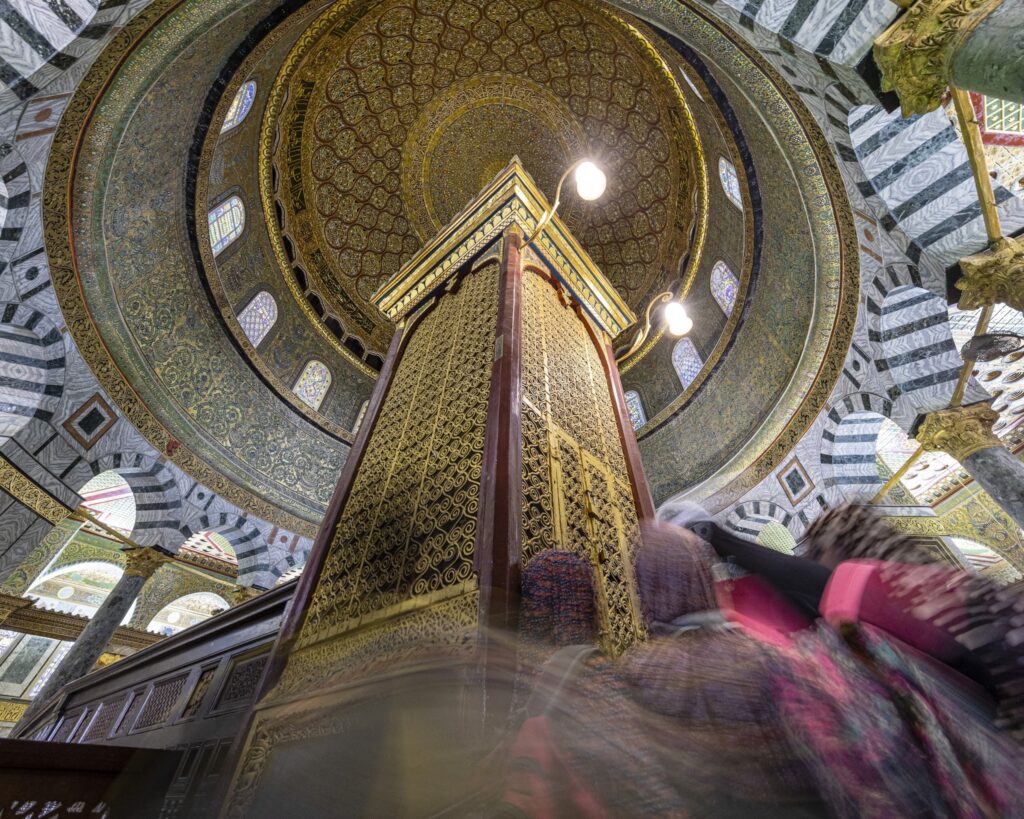

Photo: © Ziyah Gafic / VII 2022. Detail of the interior mosaic work of the Dome of the Rock. Its core elements have been preserved but the building has been renovated many times over 13 centuries, since it was first built during the Muslim Umayyad dynasty.
Lecture: MONUMENTAL: The Dome of the Rock and Notre-Dame de Paris by Ziyah Gafić
As part of FOTOIST – International Photography Festival, photographer Ziyah Gafić will give a lecture on his joint project with Tomas van Houtryve, MONUMENTAL: The Dome of the Rock and Notre-Dame de Paris, produced by The VII Foundation.
The exhibition and lecture invite reflection on the intersections of faith, national identity, power politics, social cohesion, colonization, division, and political violence through two of the world’s most iconic religious monuments: the Dome of the Rock in Jerusalem and Notre-Dame de Paris. Between 2019 and 2023, Gafić and van Houtryve were granted unprecedented access to these architectural landmarks, capturing their symbolic power and historical weight.
The lecture will provide insight into the making of the project and its broader cultural, political, and artistic dimensions. The exhibition is curated by Yonola Viguerie, Gary Knight, and James B. Wellford.
ZIYAH GAFIC
Ziyah Gafic (b. 1980, Bosnia) was born in Sarajevo and grew up during the siege of the city. He briefly became a refugee in Italy before returning home, crawling through a tunnel under Sarajevo airport to his father, a fighter in the city’s resistance. His project “Quest for Identity” is a catalog of objects found in mass graves, a document of crimes, and validation and restitution of the individual lives of his neighbors and countrymen who were murdered by Serbian soldiers and paramilitaries before being buried anonymously in mass graves.
Ziyah is Director of The VII Foundation, Sarajevo and an award-winning photojournalist, author, TED speaker and contributor to National Geographic magazine. His photography focuses on societies locked in a perpetual cycle of violence and Muslim communities around the world. Over the past 25 years, he covered major events in the Middle East, Caucasus, Arabian peninsula, and Asia, and his work has received some of the most coveted prizes in photography from World Press Photo, Visa pour l’image, Les Rencontres d’Arles, Prince Claus Fund, National Geographic Society and the Pulitzer Center on Crisis Reporting.
Lecture: "A Book of Scars Retrospective" - Igor Čoko and Nataša Govedarica / 18.10.2025 / 13:00 - 13:45 / Barabar Centre (Grand 4th Floor)
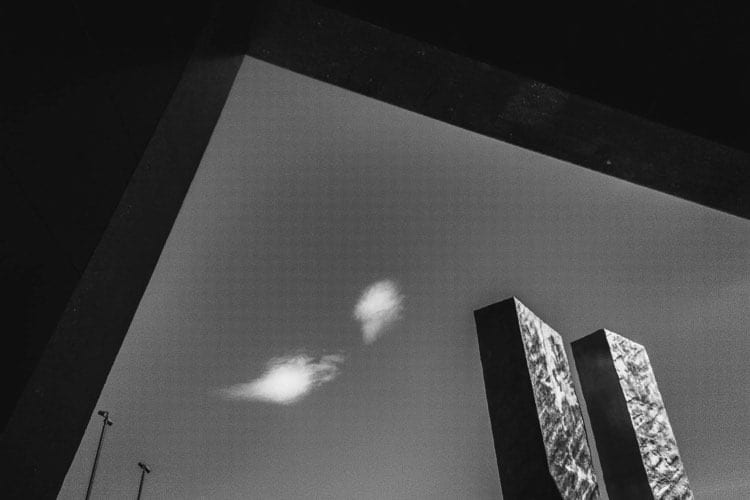

Photo: © Igor Čoko
Lecture: A Book of Scars by Igor Čoko and Nataša Govedarica
War photography, by its nature and primary function, simply cannot escape its essential and inherent weakness. While it strives to achieve and balance between the artistic and the factual – both equally important – every war photograph is left to the mercy of interpretation, manipulation, insertion into context, and propagandistic abuse. There is no frame, photographic explicitness, or content that cannot be completely distorted by manipulative accompanying text and immersion into a tendentious context, to the point that it takes on a meaning often completely opposite to what is actually depicted in the photograph. Precisely because of all this, it is necessary to be fully aware of one’s interpretative position when compiling a war photo monograph like this. Edition Book of scars is certainly no exception. The basic idea from which this series of photographic stories emerged is twofold: on one hand, the preservation of some of the most important war photo archives of renowned photographers, which without publication would very easily remain largely unknown and inaccessible to the public; and on the other hand, the use of photography as an artistic means aimed at demystifying and dismantling dominant national myths. By respecting the nature of the artistic factual artefact, directly, immediately, and factually supported, these stories attempt to step outside the framework of a culture of memory serving the national myth, as one of the key instruments of manipulating recent history in the territories of the former Yugoslavia, and to reveal all the evil and ongoing destruction of our wars. “Life in Limbo – The Book of Scars” edition currently consists of four stories, completely different, yet connected by the common idea mentioned above.
Life in Limbo, by authors Igor Čoko and Slaven Rašković, is a story about Knin. A photographic-essayistic documentary attempt to catalogue the traumas and scars experienced by a social community. This book is an attempt to make at least a small contribution to documenting the ugliest and most difficult events and occurrences from recent history in one place, based on facts and without pointing fingers. Events as traumas and scars, rather than accusations and grievances.
Freedom to the ground, by author Miloš Cvetković, is a reflection on the fall of Vukovar on November 18, 1991, that is, “the day we triumphantly celebrated one of the greatest human and moral defeats in recent history and failed the test of patriotism and love of country.” The book, a photo-chronicle of the absurdity of war and human destruction, contains 83 photographs that Cvetković took from late spring 1991 until the entry and immediately after the entry of the JNA and paramilitary units into Vukovar on November 18 of the same year.
My Bosnia, by author Miloš Cvetković, is a book about the war in Bosnia and Herzegovina, specifically the parts of it that Miloš Cvetković managed to capture through his photographic pilgrimages. His photographs cover the period from 1992 to 1995, primarily focusing on eastern, western, and central Bosnia, but the book also contains several photographs from Montenegro and Croatia, where some people from Bosnia and Herzegovina ended up as refugees, as well as Serbia, where they ended up as prisoners. This is not a comprehensive book about the war in Bosnia, but rather the perspective of a war photographer who only had access to one side of the war.
House for Sale presents a selection of the most important photographs taken by Imre Szabó on his first photographic assignment in Kosovo in 1981, probably without even realizing that this was the initial act in creating one of the most important photo archives of Kosovo from 1981 to 2001. Imre’s photographs cover almost all of the most important social events of that turbulent period of time.
Igor Čoko was born in Knin, Croatia in 1975. He holds a degree in Ethnology and Anthropology. In his role of visual anthropologist, he uses his camera to capture and explore the sensibility of the street life, its people and life of stigmatized social groups. He is a editor in chief at the Grain photo magazine that showcase street and documentary photography. His photographs are published in leading magazines and newspapers from former Yugoslavia states and Europe, and thematic street photography e magazines and websites around Globe. He exhibited his work in Serbia, Croatia, Macedonia, Italy, Greece, USA, Spain, Portugal, France and Romania. He lives and works in Belgrade, Serbia.
NATAŠA GOVEDARICA
Nataša Govedarica is a peacebuilding practitioner and human rights advocate. She currently serves as Country Director at Pro Peace Serbia (Forum Ziviler Friedensdienst), focusing on transitional justice, memory politics, and intercultural dialogue in the Western Balkans. With experience at organizations such as the Humanitarian Law Centre (RECOM Initiative) and Heartefact Fund, she has been engaged in projects that link civic activism, remembrance, and the arts. Having lived through the breakup of Yugoslavia, Govedarica is committed to addressing difficult pasts, countering denial, and fostering dialogue through both research and practice
Lecture: "What Time Could Not Erase” by Agron Dragaj / 18.10.2025 / 14:00 - 14:45 / Barabar Centre (Grand 4th Floor)
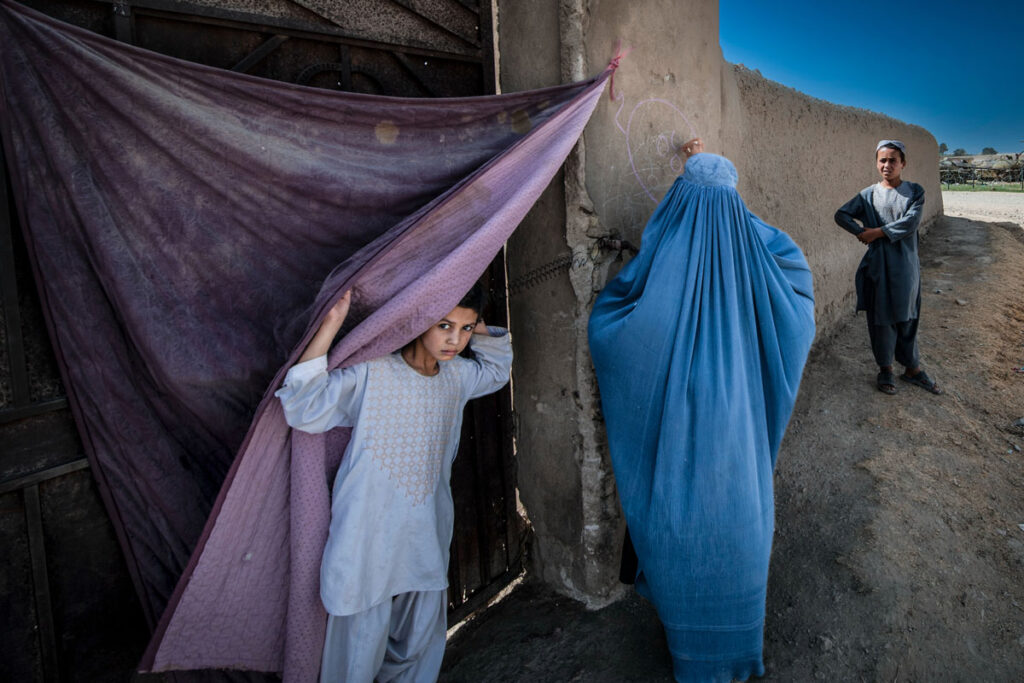
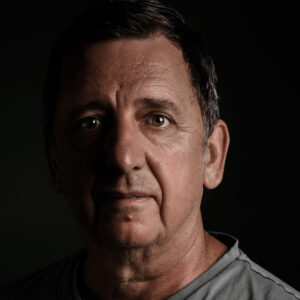
Photo: © Agron Dragaj / Afghanistan – Polio Campaign, Kandahar
A social mobilizer marks households during a polio vaccination drive in Kandahar. Amid conflict, public health workers carry hope door to door.
Lecture: “What Time Could Not Erase” – by Agron Dragaj
For twenty-five years, I have followed the traces of human struggle and endurance with a camera in hand. From Kosovo to Ukraine, Afghanistan to Mauritania, Sri Lanka to Nepal, Burma to the Philippines, Albania to Thailand. Each image is a fragment of resilience, memory, and humanity. They tell of wars and their aftermath, of villages consumed by natural disasters, of families fractured by exile, hunger, and poverty. They reveal the quieter battles too, lives shadowed by HIV and addiction, by blood feuds and gun culture, by the weight of survival and the fragile line between despair and resilience. even of elephants bound to human labour. Some of these moments flashed and vanished in an instant; others were entrusted slowly, over days and silences. Each holds what time could not erase: memory, resilience, and a fragile thread of shared humanity. In some countries, I returned again and again, in others, I stayed only a week or two. Yet everywhere, the people I met, despite the weight of war, poverty, or loss, taught me the depth of human resilience. This retrospective does not aim to impress. It aims to bear witness. It stands as a witness and a tribute to those who opened their doors and their lives, and to the truths that endure when everything else is taken away.
Thank you for stepping into this journey.
AGRON DRAGAJ
Agron Dragaj is a photographer and filmmaker originally from Kosovo, currently based in Morocco. Over the past 25 years, he has worked internationally, with a focus on stories of conflict, displacement, migration, natural disasters and human resilience. His work bridges photojournalism and long-term documentary, capturing both large historical events and the everyday lives of people navigating change. Dragaj creates images that are both intimate and universal, bearing witness to endurance, fracture, and hope.
Panel Discussion: "The Power of Visuals: Photography as Dialogue, and a Tool for Mutual Understanding & Resolution" / 18.10.2025 / 15:00 - 16:00 / Barabar Centre (Grand 4th Floor)
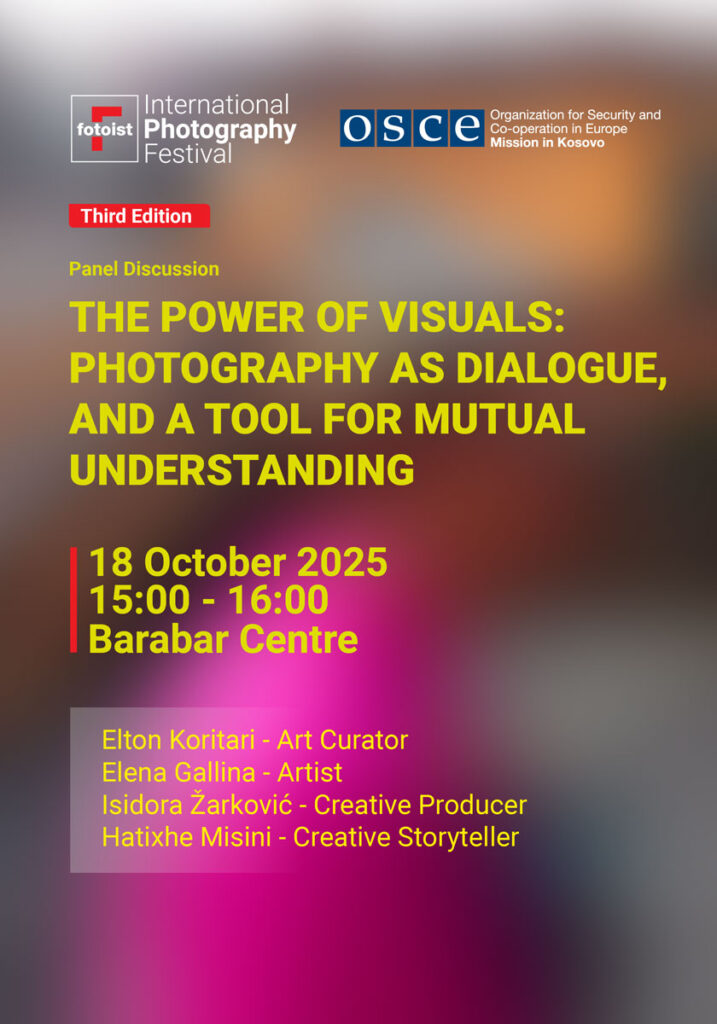
PANEL DISCUSSION
The Power of Visuals: Photography as Dialogue, and a Tool for Mutual Understanding & Resolution
📅 Date: 18 October 2025, 15:00–16:00
📍 Venue: Barabar Centre (Grand Hotel, 4th Floor)
Photography has the unique ability to transcend words, borders, and identities. This panel explores the transformative role of images as more than documentation, revealing how photography becomes a language of dialogue, empathy, and reconciliation. In divided societies, visuals can dismantle stereotypes, preserve collective memory, and open new possibilities for healing and understanding.
Bringing together artists, cultural professionals, and curators from the region and beyond, the discussion will highlight how visual storytelling documents trauma, challenges entrenched narratives, and creates common ground for peacebuilding. Drawing on both local and global perspectives, the conversation will showcase how exhibitions, collaborative projects, and participatory practices allow communities to reclaim their stories and imagine new futures.
Panellists:
- Elton Koritari – Curator, Venice Biennale
- Isidora Žarković – Creative Producer
- Elena Gallina – Artist
- Hatixhe Misini – Creative Storyteller
Sunday Lectures - IPKO Classroom - 19.10.2025
Barabar Centre (Grand - 4th Floor)
Lecture: "The Icons of Opium" by Lauresha Basha and Elton Hatibi / 19.10.2025 / 11:00 - 11:45 / Barabar Centre (Grand - 4th Floor)
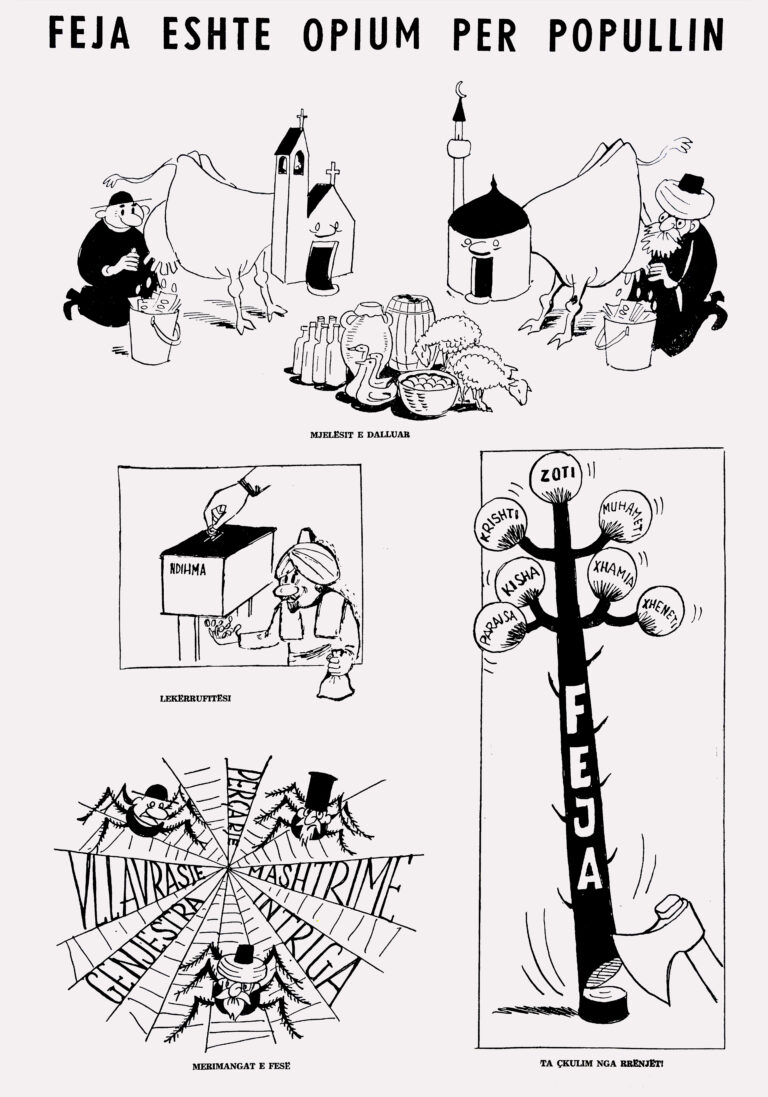
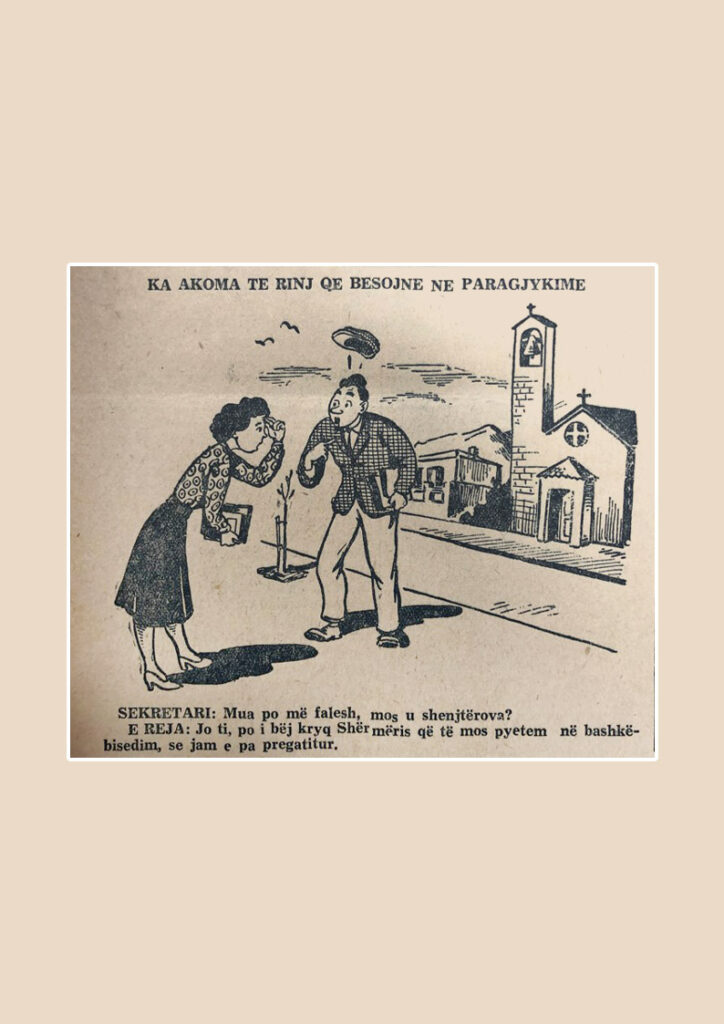
Lecture: “The Icons of Opium” – by Lauresha Basha and Elton Hatibi – Konak Institute
Antireligious Graphics of the Regime / Antireligious Graphics under Communism
Through a selection of illustrations published in daily and periodical press, this exhibition presents a perspective on the function, use, and communication of both antireligious and sacralizing graphics produced by the Albanian communist regime during the three decades spanning from the sanctioning of secularism (1946) to state atheism (1976). The common denominator of this visual production is the creation of religious “masks,” primarily through parody and caricature, and the standardization of a collective perception shaped by the messages of visual semantics. Constant circulation in the press and in the pedagogy of mass organizations, the monopoly of discourse, and the simplicity and directness of the message made it possible for these masks to transform into iconic images, so much so that they continued to dominate interpretive categories even after the fall of the regime. From a thematic point of view, the illustrations highlight two distinct phases that emerge in the early 1960s. The first, coinciding with the implementation of secularizing policies and strategies of mass control, is characterized by graphics denouncing religious practices, authorities, and traditions. In the second phase, when militant atheism was activated as an antireligious tool, religion itself became the preferred target, at the very moment when power sought to invest in controlling the individual. As a result, all the earlier “masks”, perversion, violence, obscurantism, parasitism, opportunism, ignorance, manipulation, as well as geopolitical and geocultural conflicts came to clearly identify religion, along with its layers of vocabulary, clothing, food, customs, tastes, and, of course, anthroponymy. Since nature admits no void, the public shrinking of traditional religions was compensated by the “isotopes” of socialist order, and the graphics developed dialectically. The content of these illustrations thus goes beyond the antireligious register, accompanied by the regime’s own masks: emancipation, salvation, progress, materialist worldview, science, or the “new man,” all of which opposed metaphysics, triumphed over it, and created a collective language and imagination. Even when absent as concrete images, they manifested through slogans, commentaries, anecdotes, parodies, or elaborations with academic ambition, or simply within the context of the medium, so that the public could easily perceive the embodiment of the Good or the Truth in the authorities of the regime. The function and use of these graphics were also shaped by the relationship between medium and audience. Created as a “satirical sheet” in 1945 by the Ministry of Press, Propaganda, and Popular Culture, the magazine Hosteni distinguished itself for the quality and continuity of its antireligious graphics, though its readership was more individual and filtered. In contrast, Vatra e Kulturës, despite its calibrated print run, disseminated graphics more widely than any other magazine, spreading them into the rural corners of the country. Serving as a propaganda manual within the capillary network of cultural centers, it not only offered scripts but also generated its own audience. Meanwhile, the youth press (Zëri i Rinisë, Pionieri, Fatosi), addressing a generation fully shaped under the regime’s social engineering, projected the message into the future. And it was precisely from this disenchanted generation that the elites emerged who later guided Albania’s transition.
LAURESHA BASHA
Lauresha Basha is an Albanian art professional, curator, and mentor based in Tirana. She trained at the Sotheby’s Institute of Art and completed the Creative Producer Program for the Western Balkans with the British Council. She is a co‐founder and active administrator of Gallery 70, a contemporary art gallery in Tirana, where she curates shows and supports young artists. As a mentor, Lauresha focuses on helping cultural project creators through the full arc of project development.
ELTON HATIBI
Elton Hatibi is a historian, researcher, and resident scholar at the Konak Institute in Tirana. He graduated from the University of Tirana in History, and holds a master’s degree in Mediterranean Cultures and Religions from the Pontifical Gregorian University in Rome. His current academic work focuses on the presence and history of Muslim mystical orders in Albania and the wider region.
Special Gathering about the Exhibition: “The Children of War" – by Osman Demiri 19.10.2025 / 12:00 - 13:00 / Barabar Centre (Grand - 4th Floor)
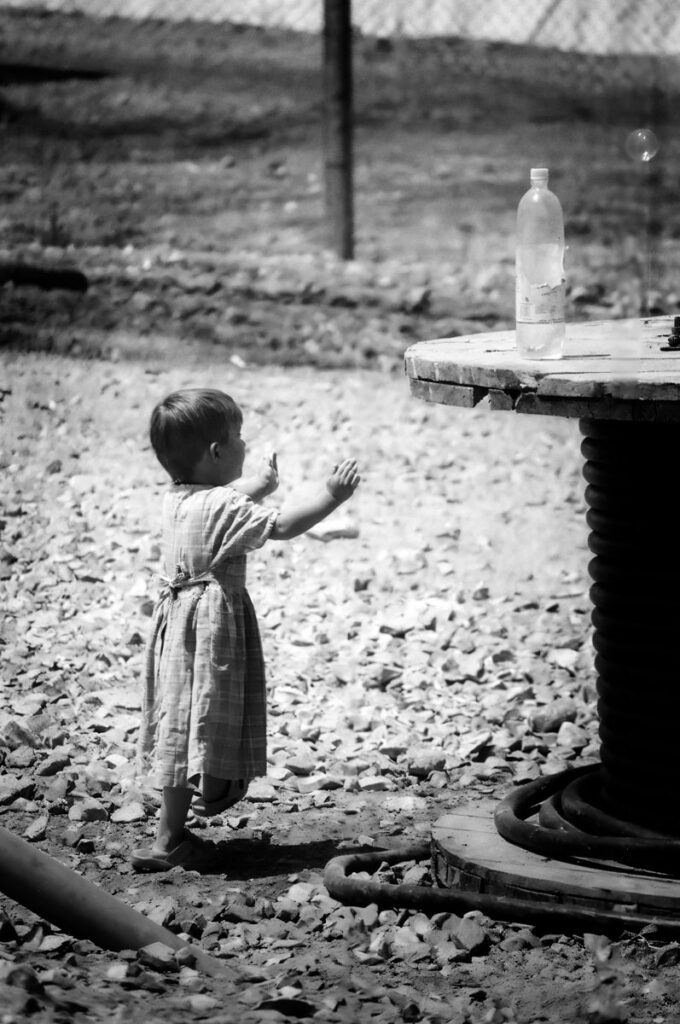
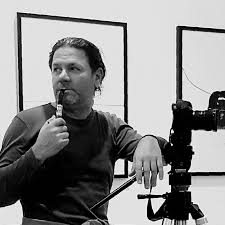
Photo: © Osman Demiri – Refugee Camp Çegran, North Macedonia 1999
Special Gathering about the Exhibition
The Children of War – by Osman Demiri
📅 Date: 19 October 2025, 12:00
📍 Venue: Barabar Centre, Grand Hotel, 4th Floor
After 26 years, we invite all former refugees from the Çegran Refugee Camp to come together for a very special reunion with photographer Osman Demiri. During the 1999 war in Kosova, Demiri captured thousands of moments in Çegran, Macedonia, where countless families sought shelter and survival. Through his photographs, many will have the chance to rediscover themselves, their loved ones, and the memories of those difficult yet defining times.
This gathering is not only about revisiting the past, it is about sharing stories, emotions, and experiences that shaped an entire generation. Side by side, we will remember the pain of exile, but also celebrate the resilience, courage, and hope that carried us forward.
As part of the event, we will also project a large selection of photographs from the refugee camp, allowing participants to immerse themselves in the visual memory of that time and perhaps even recognize themselves and those they once shared the camp with.
The day will open with the exhibition The Children of War, Demiri’s powerful visual testimony of Kosovar children in Çegran, whose innocent smiles and quiet strength became symbols of survival and national endurance.
We welcome all former refugees, their families, and friends to join us for this day of remembrance, recognition, and connection.
OSMAN DEMIRI
Osman Demiri is a visual artist, photographer, and art curator. He teaches photography at the University of Tetova, and his work spans the fields of film and contemporary visual art. As Director of Photography in feature films such as Marathona, Veprimet, and Ditar, as well as in the documentaries My Village and A Sip for Freedom, Demiri has developed a distinctive visual language where light and memory intertwine as a poetic narrative of reality. He is also the director of the short films Heroes and The Road. As the president of the Visual Artists Association “Draudacum” in North Macedonia and the founder of KULT Art Gallery, Demiri has created spaces where art becomes a dialogue between generations and cultures. He has served as a jury member and curator in numerous international exhibitions and competitions across North Macedonia, Albania, Kosovo, Serbia, Turkey, and Bulgaria. In his abstract compositions lies the essence of his artistic pursuit, a silent yet profound exploration through the universal language of the image. Osman Demiri lives and creates in North Macedonia.
Tubim dhe Ekspozitë e Veçantë
Fëmijët e Luftës – nga Osman Demiri
📅 Data: 19 Tetor 2025, ora 12:00
📍 Vendi: Barabar Centre, Grand Hotel, Kati i 4-të
Pas 26 vitesh, ftojmë të gjithë ish-refugjatët nga Kampi i Refugjatëve në Çegran të mblidhen për një ribashkim të veçantë me fotografin Osman Demiri. Gjatë luftës së vitit 1999 në Kosovë, Demiri kapi mijëra momente në Çegran, Maqedoni, aty ku mijëra familje gjetën strehë dhe shpresë. Nëpërmjet fotografive të tij, shumë prej jush do të kenë mundësinë të rigjejnë veten, të dashurit tuaj dhe kujtimet e atyre kohëve të vështira, por përcaktuese.
Ky tubim nuk ka të bëjë vetëm me të kaluarën por është një rast për të ndarë histori, emocione dhe përvoja që shënuan një brez të tërë. Krah për krah, do të kujtojmë dhimbjen e mërgimit, por edhe do të festojmë qëndrueshmërinë, guximin dhe shpresën që na mbajtën gjallë.
Si pjesë e aktivitetit, do të projektojmë një përzgjedhje të gjerë fotografish nga kampi i refugjatëve, duke u ofruar pjesëmarrësve mundësinë të zhyten në kujtesën vizuale të asaj kohe dhe ndoshta të njohin veten ose njerëzit me të cilët kanë ndarë jetën në kamp.
Dita do të hapet me ekspozitën Fëmijët e Luftës, dëshminë e fuqishme vizuale të Demirit për fëmijët kosovarë në Çegran, buzëqeshjet e pafajshme dhe forca e heshtur e të cilëve u bënë simbole të mbijetesës dhe qëndresës kombëtare.
Ftojmë të gjithë ish-refugjatët, familjet dhe miqtë e tyre të na bashkohen në këtë ditë kujtese, mirënjohjeje dhe ribashkimi.
OSMAN DEMIRI
Osman Demiri është artist vizual, fotograf dhe kurator arti. Ai ligjëron fotografinë në Universitetin e Tetovës dhe veprimtaria e tij shtrihet në fushën e filmit dhe të artit vizual bashkëkohor. Si Drejtor i Fotografisë në filma artistikë si Marathona, Veprimet dhe Ditar, si edhe në dokumentarët Fshati Im dhe Një Gllënjkë për Liri, Demiri ka krijuar një gjuhë të veçantë vizuale, ku drita dhe kujtesa ndërthuren si rrëfim poetik i realitetit. Ai është gjithashtu regjisor i filmave të shkurtër Heronjtë dhe Rruga. Si kryetar i Shoqatës së Artistëve Vizual “Draudacum” në Maqedoninë e Veriut dhe themelues i Galerisë së Artit KULT, Demiri ka ndërtuar hapësira ku arti shndërrohet në dialog mes brezave dhe kulturave. Ka qenë anëtar jurie dhe kurator në shumë konkurse e ekspozita ndërkombëtare në Maqedoninë e Veriut, Shqipëri, Kosovë, Serbi, Turqi dhe Bullgari. Në veprat e tij kompozicione abstrakte është edhe boshti i kërkimit artistik një kërkim i heshtur, por i thellë, përmes gjuhës universale të imazhit. Osman Demiri jeton dhe krijon në Maqedoninë e Veriut
Panel Discussion: “Disrupting the Gaze: Photography, Gender Equality, and the Politics of Visibility” / 19.10.2025 / 13:00 - 14:00 / Barabar Centre (Grand - 4th Floor)
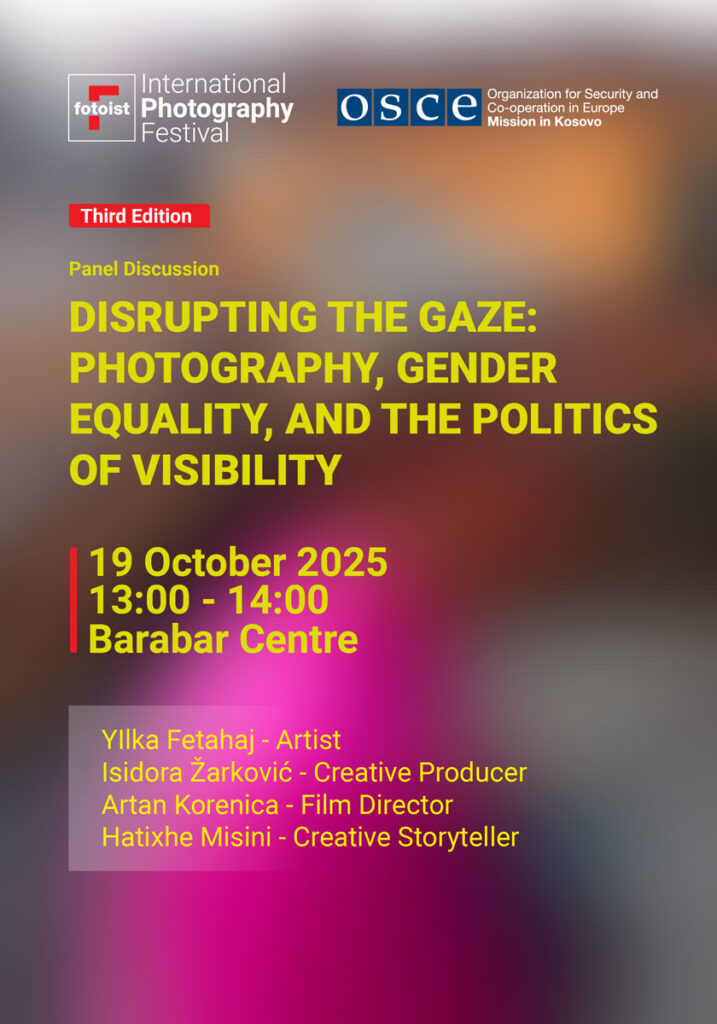
PANEL DISCUSSION
Disrupting the Gaze: Photography, Gender Equality, and the Politics of Visibility
📅 Date: 19 October 2025, 13:00–14:00
📍 Venue: Barabar Centre (Grand Hotel, 4th Floor)
Who gets seen, and who decides? Disrupting the Gaze examines how photography challenges systems of visibility that have historically marginalized women, persons with disabilities, and non-majority communities. By breaking away from dominant representational norms, photography becomes a political act-reshaping narratives, reclaiming agency, and restoring dignity to those too often pushed to the margins.
This panel will bring together artists, academics, and cultural practitioners to discuss how visual storytelling can resist stereotypes, amplify underrepresented voices, and foster gender equality and social justice. Through personal reflections, artistic examples, and critical analysis, the conversation will explore the risks, ethics, and transformative potential of photography as a medium of empowerment and inclusion.
Panellists:
Yllka Fetahaj – Artist
Isidora Žarković – Creative Producer
Artan Korenica – Film Director
Hatixhe Misini – Creative Storyteller
Lecture: "The Unknown Albanians" by Ben Blushi
/ 19.10.2025 / 14:00 - 14:45 / Barabar Centre (Grand - 4th Floor)
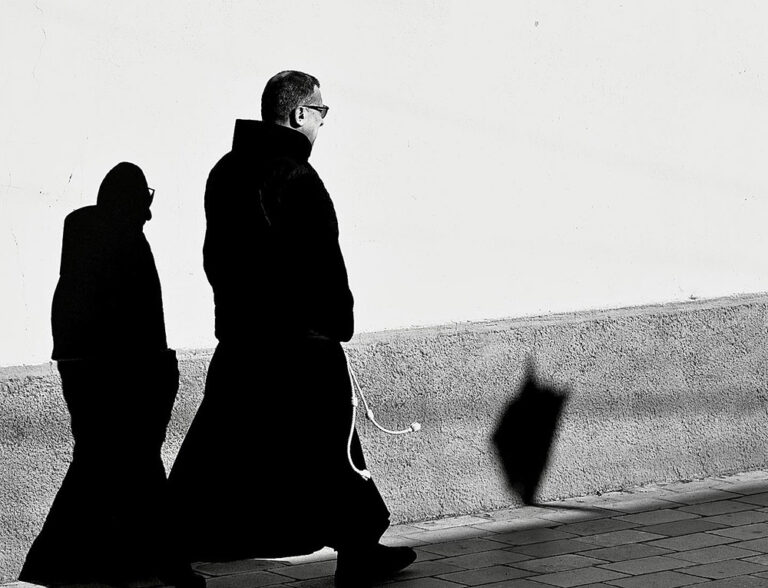
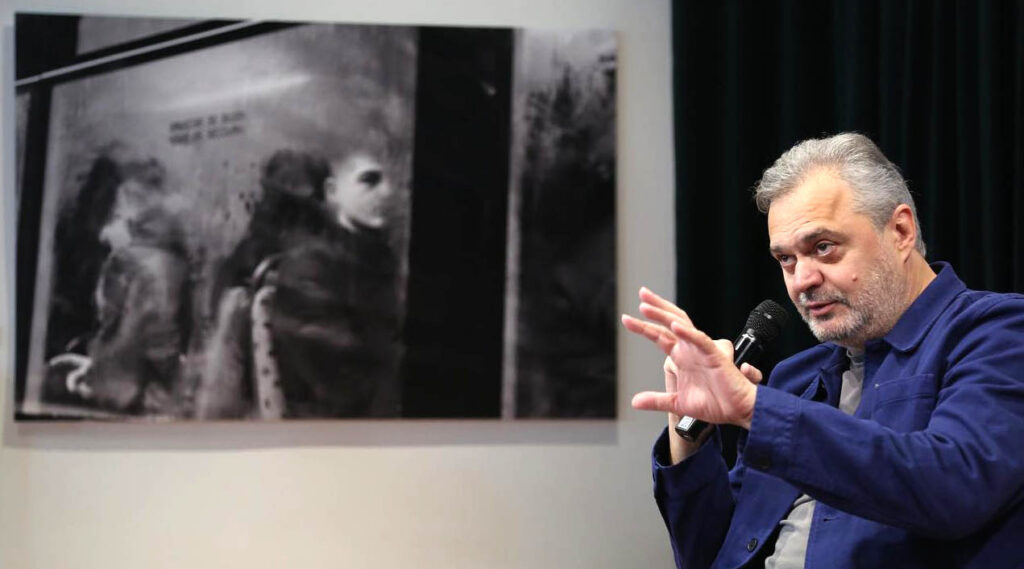
Photo: © Ben Blushi
Lecture: The Unknown Albanians, A Visual Journey by Ben Blushi
We are honored to welcome you to a special lecture accompanying the exhibition The Unknown Albanians by Ben Blushi— a distinguished Albanian writer, photographer, and public intellectual whose recent turn to visual storytelling opens a profound new chapter in his creative journey. On the first day of 2022, with a camera in hand and no formal training in photography, Ben Blushi stepped into the silent streets of Tirana. What began as a quiet personal experiment soon evolved into a compelling body of work, a search not just for images, but for meaning, presence, and human connection. In his own words, he discovered that “the shutter is pressed by the finger, but the photograph is made by the mind,” and that true photography begins the moment one starts to truly see.
The Unknown Albanians is more than an exhibition. It is a living archive of faces, gestures, and moments from across Albania, a tribute to people who are often overlooked, yet form the very texture of Albanian society. With the curiosity of a writer and the sensitivity of a humanist, Blushi has walked through cities, villages, ruins, and remote beaches, capturing anonymous individuals whose expressions carry entire stories of struggle, dignity, displacement, and belonging. In this lecture, Ben Blushi will speak about the genesis of the project, the unexpected lessons of his photographic journey, and the ways in which photography complements and transforms his literary voice. He will reflect on the invisible thread that connects image and memory, and how the act of photographing strangers became a profound act of understanding.
This event invites students, artists, readers, and citizens to rediscover the power of seeing and to recognize that in every unknown face, there is a mirror of our shared humanity. Welcome to The Unknown Albanians and to the world through Ben Blushi’s lens.
BEN BLUSHI
Ben Blushi is an Albanian writer, photographer, and public intellectual whose work spans literature, journalism, and visual storytelling. Known for his deeply reflective novels and essays, Blushi has become one of the most influential literary voices in contemporary Albanian culture. His fiction, often rich in historical depth and political nuance, explores themes of identity, memory, and social transformation. His novel Otello, Arapi i Vlorës was awarded the European Union Prize for Literature in 2014 and translated into multiple languages.
In recent years, Blushi has turned his attention to photography, approaching it with the same humanistic curiosity and narrative depth that define his writing. His photographic work focuses on ordinary people in overlooked spaces, portraying them with intimacy, dignity, and quiet power. His latest project, Unknown Albanians, is both a photographic archive and a personal journey through Albania’s social and emotional landscapes, capturing the invisible presence of everyday lives.
Through both words and images, Blushi continues to document and question the complexities of Albanian society, bridging the personal and the political, the poetic and the real.
